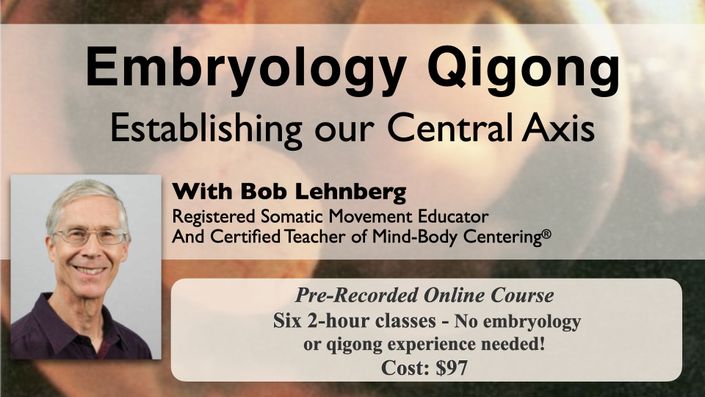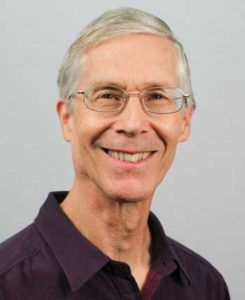
Qigong of Embryology: Establishing Our Central Axis
Recorded Qigong Course with Bob Lehnberg
Six 2-hour classes, no prerequisites needed
Course description:
Early in our embryological development, we layer in a head-tail dimension to our front-back orientation. Our head-tail axis, or long axis, is supported through the development of three embryological layers and the energetic polarity of our central line. We can utilize these four systems of long body support to find easeful alignment. The endoderm develops our gut axis, the ectoderm develops the axis of our central nervous system, the meso-tissue creates our vertebral axis, and our energetic axis creates our central channel from pelvic floor to palate. With all these means of central axis support, we need not use effort to arrange ourselves; we simply re-member and embody the early stages of these systems to create ease and alignment in the present.
Class topics and descriptions:
- Our Inner Sea of Qi and Outer Sea of Qi. Our Inner Sea of Qi and Outer Sea of Qi are created by drawing in our yolk sac and becoming surrounded by our amniotic sac. These “seas” derive from our two-layered stage of endoderm and ectoderm. Our middle body begins with the process of gastrulation and the transition from 2 layers to 3 layers.
- Gastrulation. Gastrulation initiates at the point that later becomes the hui yin or perineal body at the base of our pelvis. Cells go on to form the primitive streak and the beginning of our middle body. The primitive streak initiates middle body development and supports our lower dan tien and ability to root into this center.
- The Notochord. The notochord arises from the primitive streak and continues to inform our head-tail axis. It has been described as a reed-like structure. The notochord develops into the vertebral discs and long spinal ligaments to provide a soft and fluid movement quality to the spine.
- Neural Tube Formation. In response to the notochord, the neural plate folds, and zips to form the neural tube. The foundation of our CNS, the tube is bathed in amniotic fluid which forebears the cerebrospinal fluid and its own inherent rhythm, the cranio-sacral rhythm. Being yang in nature, the CNS is grounded by a caudal “cap” created by the tail bud, a yin component of the meso-tissue.
- The Bony Spine. The bony spine is derived from somites, segments which form around the notochord and spinal cord. They create individual vertebrae that allow sequential articulation. The vertebral column provides containment and structural support for our long axis.
- Kidney Development. Derived from three pair of primordial tissue, the kidneys coalesce to their final location in the mid-back. They are considered the source of our “prenatal qi” received from our parents. Releasing withholding and pushing patterns here can help us modulate our personal energy.
Frequently Asked Questions
Get started now!
Your Instructor

In 1990, Bob Lehnberg received his certification as Practitioner of Body-Mind Centering® (BMCsm) and in 2002 Teacher of Body-Mind Centering. Since then Bob has received teacher certifications for BMC Yoga, Integral Yoga and Supreme Science of Qigong. He has been teaching in schools of massage therapy and programs of somatic training since 1990 and has had the good fortune to teach BMC and somatic practices throughout the US and internationally in Europe, Canada, China, and Taiwan.
Bob is a co-founder of Kinesthetic Learning Center in Durham, NC and has been on faculty teaching and coordinating the BMC Somatic Movement Educator (SME) and Practitioner certification programs since 2007. He is coordinator of SME courses for Esprit en Mouvement in Montreal, Canada and is Co-director of the SME program in Taitung, Taiwan.
